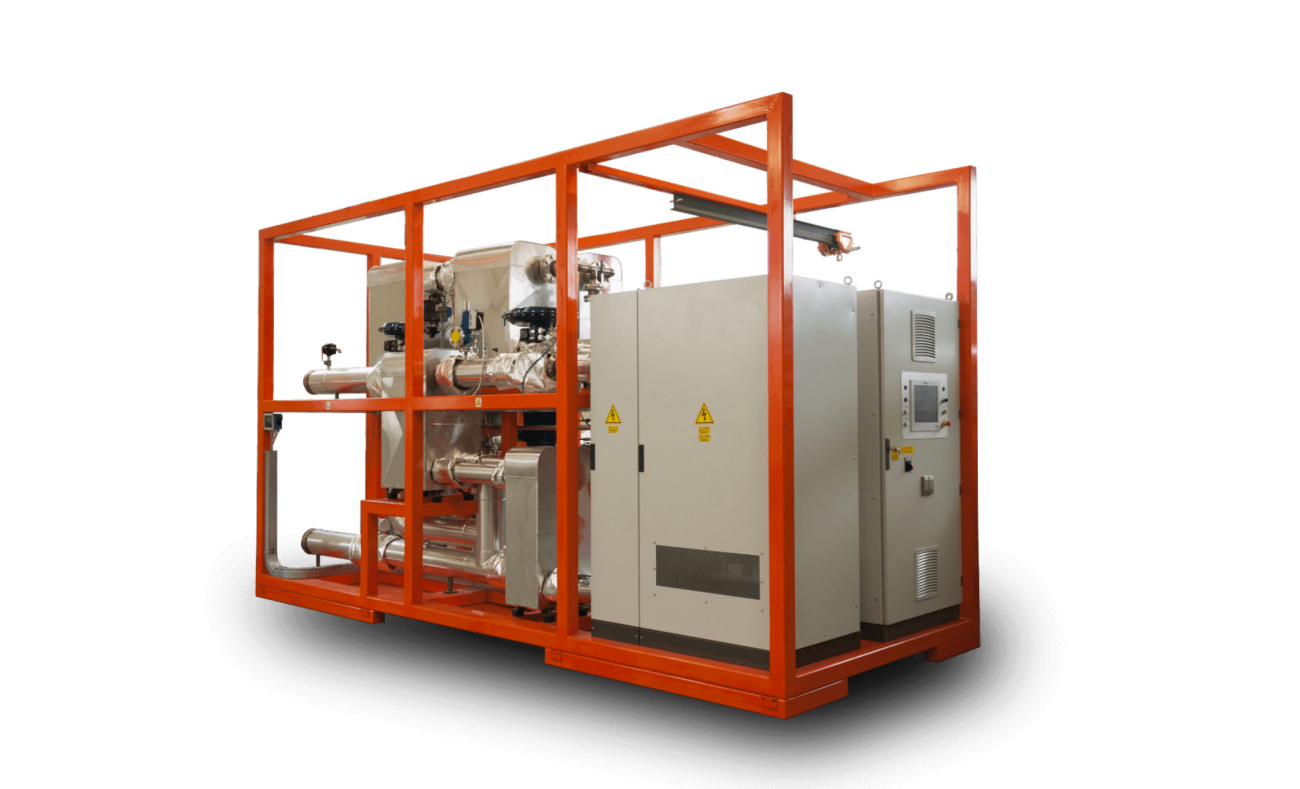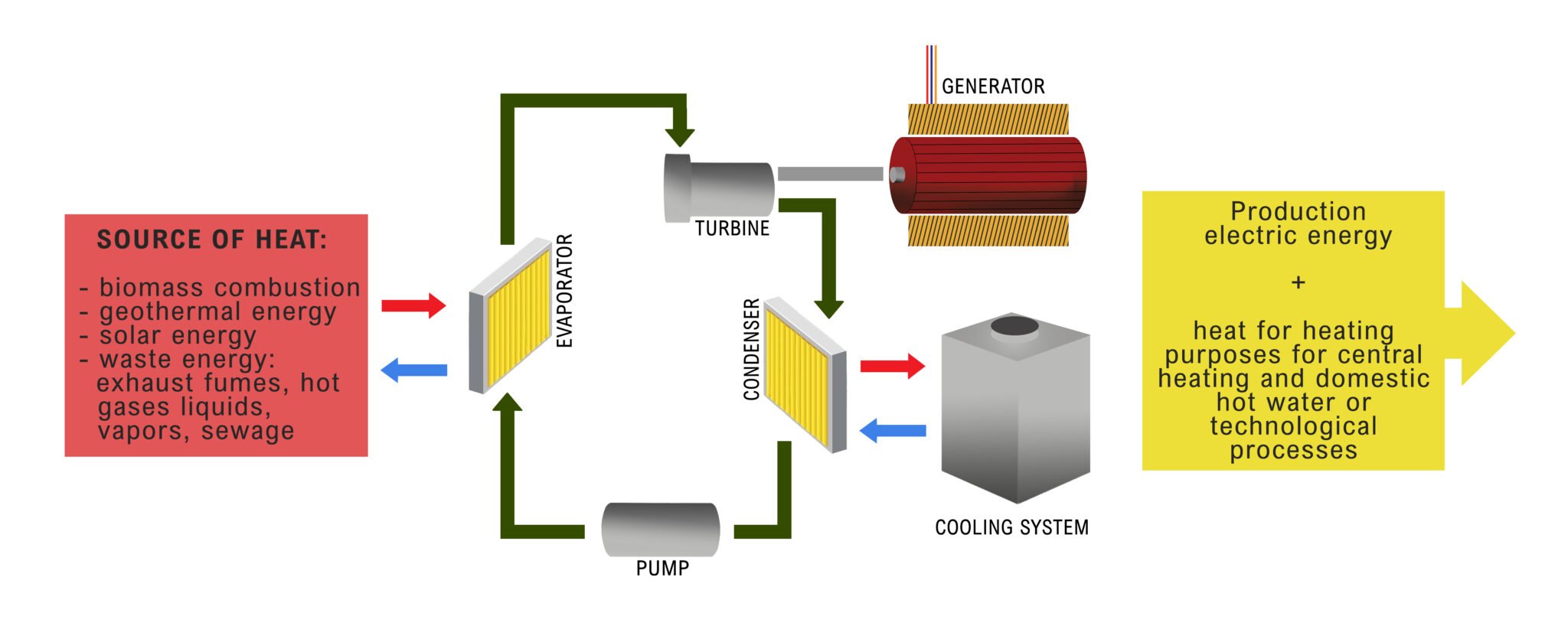
HEAT RECOVERY AND CONVERSION TO ELECTRICITY – ORC
Organic Rankine Cycle (ORC) is a low-temperature equivalent of the classic Clasius-Rankine cycle, in which the working factors used are the so-called low-boiling organic agents (hydrocarbons) instead of water / steam.
The organic Rankine cycle consists of the same components as a conventional steam power plant (boiler, expansion device, condenser and pump). The working fluid, however, is an organic compound that has a lower boiling point than water, which allows it to generate electricity from low heat source temperatures.
ORC is one of the most popular methods of producing electricity from low-temperature heat sources. ORC technology can therefore play a significant role, in particular in reducing the energy consumption of industry and the production of energy from renewable sources, using geothermal energy, photovoltaics, biomass or waste heat (i.e. heat energy that is otherwise lost to the atmosphere). The ORC system can be used, with slight modifications, in conjunction with various heat sources. Moreover, unlike conventional energy cycles, this technology allows for decentralized and low-scale electricity generation. These advantages make ORC technology more suited to the conversion of waste heat or renewable energy sources than steam energy, the availability of which is generally more localized than that of fossil fuels, and their temperature (e.g. in a solar collector or geothermal well) is lower than obtained from traditional fuels.
ORC can positively affect the energy consumption of industrial processes, mainly by recovering heat energy lost to the atmosphere. Installing an ORC to convert waste heat into electricity enables better use of primary energy. Many installations in the manufacturing industry reject heat at a relatively low temperature. In large plants, this heat is usually redundant and often cannot be fully reused on site or used for district heating. Therefore, it is discharged into the atmosphere, despite being able to be converted into electricity, which can then be consumed on site or fed back to the grid. In such a system, the waste heat is usually recovered by an intermediate loop (system of exchangers and pipelines) for heat exchange and used to evaporate the working fluid in the ORC cycle. The rest of the electricity production process is the same as in a conventional power plant.
Advantages of ORC:
- Low temperature of the hot spring
- Low evaporation temperature and pressure
- No need for overheating
- Simple evaporator design
- Low temperature of vapors in the turbine
- High condensing pressure Compact design (high density factor)
- Compact design (high density factor)
- No need for water treatment and egassing
- Relatively simple construction expanders

Together with our partners, we offer ORC container systems with thermal power starting from 350 kWt, in which the working medium is HFO. Despite a specific series of standard solutions, we are able to offer custom-made solutions, starting from approx. 150 kWt.
If you have a source of thermal energy with a capacity of 150 kWt, please ask for an offer.
© Copyright 2021 Vens Sp. z o.o.
Privacy Policy